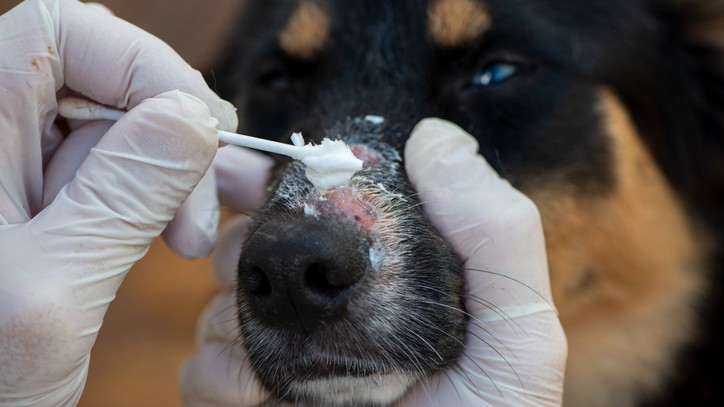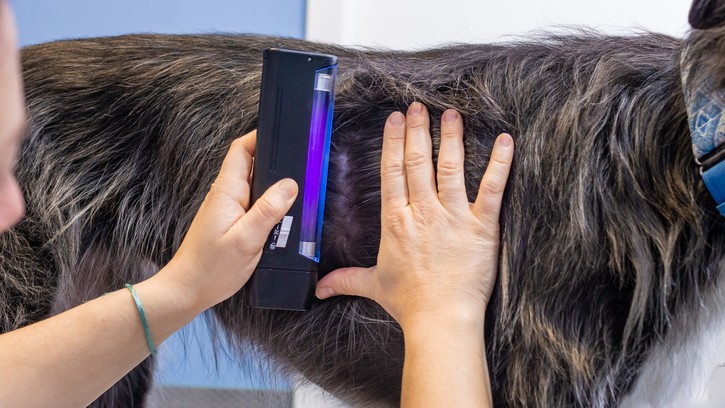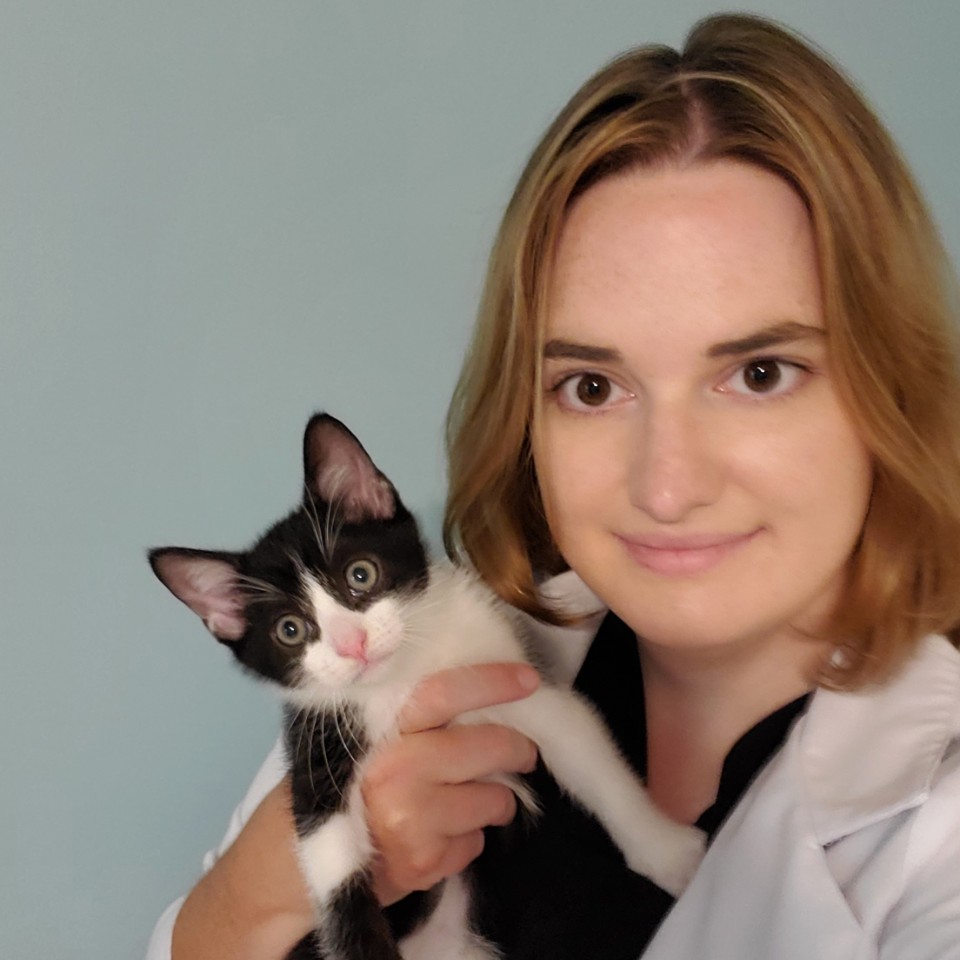Ringworm in Dogs: A vet’s guide
Could your dog have this fungal infection? Read on to learn all about ringworm in dogs

Despite its name, ringworm in dogs is not actually caused by a worm. Ringworm is a fungal infection spread between animals or occasionally acquired from the soil. Dogs with ringworm often develop hairless, scaly, itchy skin lesions that can spread to other pets or even people in the household. To get ahead of ringworm, it’s important to understand how this fungal infection can spread and what to do if your dog gets it. If you suspect your dog may have ringworm, the first step is a visit to your veterinarian. Read on to learn more about what this fungal infection means, and how you can help your dog – and your family – through it.
- Best pet insurance: Make pet emergencies less stressful
What is ringworm in dogs?
Ringworm, also known as dermatophytosis, is not a worm at all. It is an infection of the hair, skin, or nails caused by certain species of fungus. The most common fungal species that affect dogs and cats are Microsporum canis, Microsporum gypseum, and Trichophyton mentagrophytes. These fungal species may live on other infected animals or may live in soil. Infection with these fungal species can result in hair loss, itching, scaling, and crusting, often in a classic round focal area of the skin. Infection with M. canis is most common in dogs, but dogs can also be infected with more than one species of fungus at the same time.
- Mites on dogs: Vet's guide to symptoms and treatment
- Kennel cough in dogs: A vet's guide to symptoms, causes and treatment
How do dogs get ringworm?
Ringworm infection occurs through skin contact with the fungus, most commonly through direct animal-to-animal contact. This means ringworm spreads quickly in areas where dogs are in close contact, such as kennels or shelters. Dogs can also be infected through contact with fomites – objects which have been contaminated with infective fungal spores such as blankets, brushes, or bedding used by an infected dog. In some cases, dogs can be infected by contact with soil harboring infective fungal species.
Dogs are more susceptible to ringworm infection if there is any damage to their natural skin barrier, such as cuts or abrasions. Trauma to the skin such as can occur from scratching, parasites, or after close shaving may make a dog more susceptible to ringworm. Dogs that are immunocompromised may also be more susceptible to developing a ringworm infection compared to healthy dogs.
Once dogs have come into contact with the infective fungus, infection develops within about 2-6 hours. It takes approximately 1-3 weeks for symptoms of infection such as hair loss to develop, meaning that infected dogs can be shedding the infective fungus and infecting other dogs prior to becoming symptomatic themselves. This can make it difficult to eradicate ringworm from crowded environments such as shelters.
Can I get ringworm from my dog?
Unfortunately, yes, dermatophytosis is a zoonotic infection, meaning that it can infect humans. Pet owners are advised to use caution when handling a pet with ringworm. Consider wearing disposable gloves when handling, medicating, or cleaning up after your pet until your veterinarian advises you that the ringworm infection is no longer contagious. If you develop any skin lesions – such as raised, red, round, or itchy areas of the skin – contact your own doctor right away and be sure to let them know that your pet is currently being treated for ringworm. For most people, ringworm infections are self-limiting and are easily treatable with topical medications from your doctor.

What are the symptoms of ringworm in dogs?
Some dogs will exhibit the classic ringworm lesion: a round area of hair loss and scaling that may or may not be itchy. Other dogs will have more generalized symptoms and may have more widespread areas of broken hairs, hair loss, redness, scaling, crusting, and ulceration. In many dogs, ringworm lesions are limited to the head and face, while others may have lesions anywhere on the body. Itching may or may not be present in any given case.
Get the best advice, tips and top tech for your beloved Pets
To diagnose ringworm, your veterinarian will first perform a full head to tail physical examination, with particular focus on your dog’s skin. Your veterinarian may use a special light called a Wood’s Lamp, which emits long-wave UVA light via a fluorescent lamp, to look for areas of bright apple-green fluorescence on your pet’s skin, which can be indicative of a fungal infection. Your veterinarian may also test for ringworm by taking samples of your pets hair using a special brush and then applying the hair to a culture plate. These samples are allowed to grow for several days to see if fungus can be cultured from the sample. The sample is examined daily for color change and colony growth, and a diagnosis is typically made within 7-21 days, depending on the type of fungus suspected.
How is ringworm in dogs treated?
There are several ways to treat ringworm in dogs. Ringworm in dogs will typically resolve on its own, but it may take several weeks to do so. Because ringworm is contagious to other animals, including humans, it is recommended to treat it to shorten the course of the disease. The goal of treatment is to treat both the patient and the environment to reduce contamination with fungal spores.
One treatment your veterinarian may recommend is topical therapy such as lime sulfur dips. Lime sulfur, while messy and unpleasant, is highly effective against dermatophytosis and has residual activity for 3 days after bathing. Lime sulfur dips are applied twice weekly until a clinical cure has been confirmed with diagnostic testing.
In addition to topical therapy, many veterinarians also prescribe systemic therapy with oral anti-fungal agents such as Itraconazole or Terbinafine. These medications target ringworm at its source. With both drugs, side effects are uncommon and are usually mild, making them safe choices for most dogs.
Environmental treatment will also be necessary to reduce the spread of infective fungal spores in the environment. You will need to dust and vacuum regularly to remove hair and skin scales from the environment. Wash bedding and other fabrics with which your pet comes into contact in hot water to remove hair and skin scales. Pet food bowls should be soaked in hot soapy water, scrubbed clean, and rinsed well. Disinfecting solid, non-porous surfaces with diluted chlorine bleach (1:10 or 1:32 dilution) will kill fungal spores and help reduce the risk of spreading ringworm to other pets and people in the household. Cleaning this way twice weekly is recommended until clinical cure is confirmed with diagnostic testing.
Prognosis for Ringworm in Dogs
The good news is that the prognosis for ringworm in dogs is excellent. Although ringworm can be quite the nuisance, most cases are easily treatable. In healthy dogs, ringworm resolves within a few weeks. In dogs with other medical conditions, treatment may take longer. Be sure to follow your veterinarian’s instructions for treatment and follow-up care closely, and your dog will soon be back to his old self again.
Dr. Elizabeth Racine is a small animal general practice vet covering all things pet health and wellness. Her special interests include veterinary behavior, nutrition, and internal medicine.
As a freelance writer, Dr. Racine has written content for major companies in the industry such as the American Kennel Club, Merck Animal Health, Bayer PetBasics, Elanco, and CareCredit. In her free time, Dr. Racine enjoys playing trampoline dodgeball, hiking with her beagle Dasher, and spending time with her three mischievous cats.

